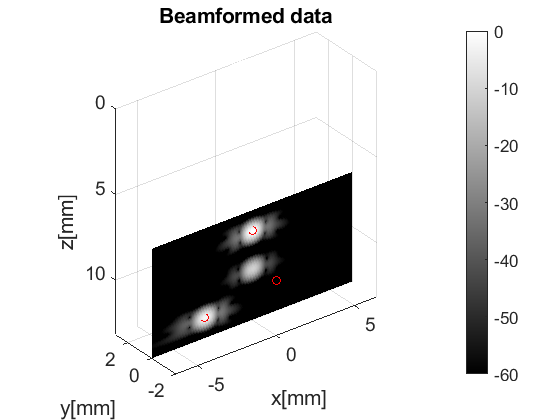STA simulation on a matrix array with the USTB built-in Fresnel simulator
In this example we show how to use the built-in fresnel simulator in USTB to generate a Synthetic Transmit Aperture (STA) dataset using a 2D matrix array probe and illustrate how it can be beamformed with USTB.
This tutorial assumes familiarity with the contents of the 'CPWC simulation with the USTB built-in Fresnel simulator' tutorial. Please feel free to refer back to that for more details.
by Alfonso Rodriguez-Molares alfonso.r.molares@ntnu.no and Arun Asokan Nair anair8@jhu.edu 25.03.2017_
Contents
Close all previously opened plots and define the F-Number we will be using.
close all;
F_number=1.0;
Phantom
We start off defining an appropriate phantom structure to image. Our phantom here is a set of three point scatterers about a set depth. USTB's implementation of phantom comes with a plot method to visualize the phantom for free!
z0=10e-3; % Depth of middle scatterer pha=uff.phantom(); pha.sound_speed=1540; % speed of sound [m/s] pha.points=[0e-3, 0, z0-2e-3, 1;... % point scatterer positions [m] 0, -2e-3, z0, 1;... -3e-3, 0, z0+2e-3, 1]; fig_handle=pha.plot();
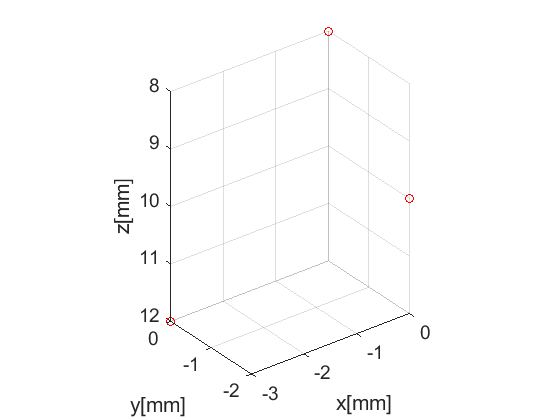
Probe
The next UFF structure we look at is probe. It contains information about the probe's geometry. USTB's implementation of probe comes with a plot method too. When combined with the previous figure we can see the position of the probe respect to the phantom. Here, we shall set the probe to be a matrix_array type.
prb=uff.matrix_array(); prb.N_x=32; % number of elements prb.N_y=4; % number of elements prb.pitch_x=400e-6; % probe pitch in azimuth [m] prb.pitch_y=400e-6; % probe pitch in elevation [m] prb.element_width=370e-6; % element width [m] prb.element_height=370e-6; % element height [m] prb.plot(fig_handle);
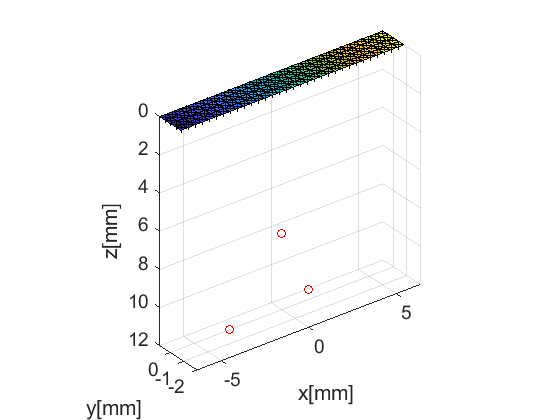
Pulse
We then define the pulse-echo signal which is done here using the fresnel simulator's pulse structure. We could also use 'Field II' for a more accurate model.
pul=uff.pulse(); pul.center_frequency=3e6; % transducer frequency [MHz] pul.fractional_bandwidth=0.6; % fractional bandwidth [unitless] pul.plot([],'2-way pulse');
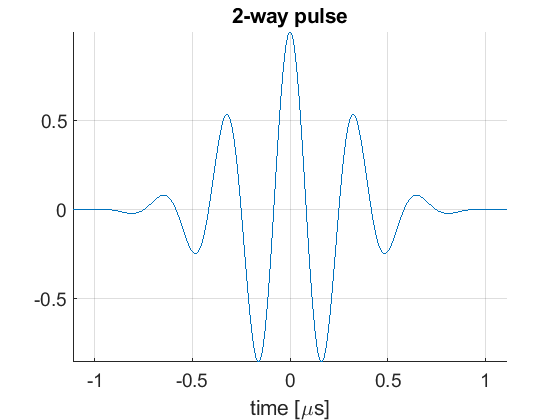
Sequence generation
Now, we shall generate our sequence! Keep in mind that the fresnel simulator takes the same sequence definition as the USTB beamformer. In UFF and USTB a sequence is defined as a collection of wave structures.
For our example here, we define a sequence of 128 (= number of elements) waves each emanating from a single element on the probe aperture. An appropriate apodization window is enforced through setting apodization.window = uff.window.sta. The wave structure too has a plot method.
seq=uff.wave(); for n=1:prb.N_elements seq(n)=uff.wave(); seq(n).probe=prb; seq(n).source.xyz=[prb.x(n) prb.y(n) prb.z(n)]; seq(n).apodization=uff.apodization(); seq(n).apodization.window=uff.window.sta; seq(n).apodization.origin=seq(n).source; seq(n).sound_speed=pha.sound_speed; % show source fig_handle=seq(n).source.plot(fig_handle); end
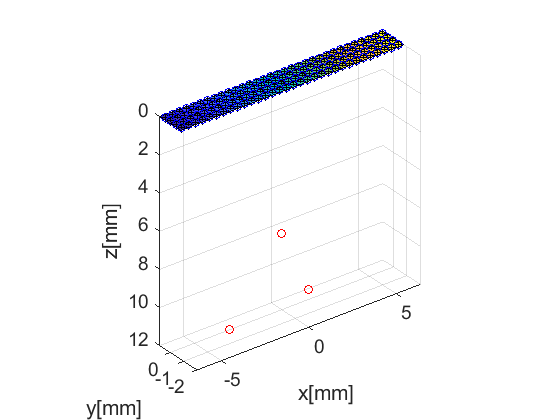
The Fresnel simulator
Finally, we launch the built-in simulator. The simulator takes in a phantom, pulse, probe and a sequence of wave structures along with the desired sampling frequency, and returns a channel_data UFF structure.
sim=fresnel(); % setting input data sim.phantom=pha; % phantom sim.pulse=pul; % transmitted pulse sim.probe=prb; % probe sim.sequence=seq; % beam sequence sim.sampling_frequency=41.6e6; % sampling frequency [Hz] % we launch the simulation channel_data=sim.go();
USTB's Fresnel impulse response simulator (v1.0.7) ---------------------------------------------------------------
Scan
The scan area is defines as a collection of pixels spanning our region of interest. For our example here, we use the linear_3D_scan option, which is defined with three components: the x-dimension range, the z-dimension range and the y-dimension range. scan too has a useful plot method it can call.
sca=uff.linear_3D_scan('radial_axis',linspace(-6.4e-3,6.4e-3,200).','axial_axis',linspace(z0-3.2e-3,z0+3.2e-3,100).','roll',0); sca.plot(fig_handle,'Scenario'); % show mesh
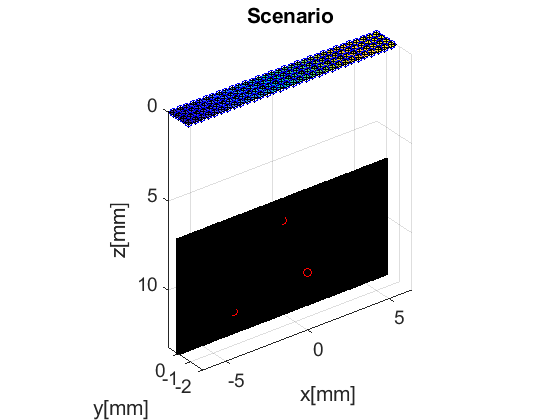
Pipeline
With channel_data and a scan we have all we need to produce an ultrasound image. We now use a USTB structure beamformer, that takes an apodization structure in addition to the channel_data and scan.
pipe=pipeline(); pipe.channel_data=channel_data; pipe.scan=sca; pipe.receive_apodization.window=uff.window.tukey50; pipe.receive_apodization.f_number=F_number; pipe.transmit_apodization.window=uff.window.tukey50; pipe.transmit_apodization.f_number=F_number;
The pipeline structure allows you to implement different beamformers by combination of multiple built-in processes. By changing the process chain other beamforming sequences can be implemented. It returns yet another UFF structure: beamformed_data.
% To achieve the goal of this example, we use delay-and-sum (implemented in % the *das_matlab()* process) as well as coherent compounding. % Since we are doing 3D imaging with a 3D scan we need to use the spherical % transmit delay model das = midprocess.das(); das.spherical_transmit_delay_model = spherical_transmit_delay_model.spherical();
b_data=pipe.go({das postprocess.coherent_compounding});
% show
fig_plot=pha.plot();
b_data.plot(fig_plot);
USTB General beamformer MEX v1.1.2 .............done!
